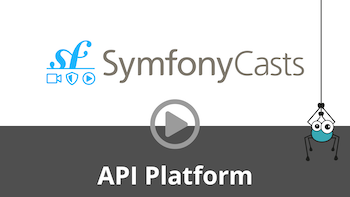# Subresources
A subresource is a collection or an item that belongs to another resource.
API Platform makes it easy to create such operations.

Watch the Subresources screencast
The starting point of a subresource must be a relation on an existing resource.
For example, let's create two entities (Question, Answer) and set up a subresource so that `/question/42/answer` gives us
the answer to the question 42:
```php
id;
}
// ...
}
// api/src/Entity/Question.php
namespace App\Entity;
use ApiPlatform\Core\Annotation\ApiResource;
use ApiPlatform\Core\Annotation\ApiSubresource;
use Doctrine\ORM\Mapping as ORM;
#[ORM\Entity]
#[ApiResource]
class Question
{
#[ORM\Id, ORM\Column, ORM\GeneratedValue]
private ?int $id = null;
#[ORM\Column(type: 'text')]
public string $content;
#[ORM\OneToOne]
#[ORM\JoinColumn(referencedColumnName: 'id', unique: true)]
#[ApiSubresource]
public Answer $answer;
public function getId(): ?int
{
return $this->id;
}
// ...
}
```
```yaml
# api/config/api_platform/resources.yaml
App\Entity\Answer: ~
App\Entity\Question:
properties:
answer:
subresource:
resourceClass: 'App\Entity\Answer'
collection: false
```
Note that all we had to do is to set up `#[ApiSubresource]` on the `Question::answer` relation. Because the `answer` is a to-one relation, we know that this subresource is an item. Therefore the response will look like this:
```json
{
"@context": "/contexts/Answer",
"@id": "/answers/42",
"@type": "Answer",
"id": 42,
"content": "Life, the Universe, and Everything",
"question": "/questions/42"
}
```
If you put the subresource on a relation that is to-many, you will retrieve a collection.
Last but not least, subresources can be nested, such that `/questions/42/answer/comments` will get the collection of comments for the answer to question 42.
Note: only for `GET` operations are supported at the moment
## Using Serialization Groups
You may want custom groups on subresources, you can set `normalization_context` or `denormalization_context` on that operation. To do so, add a `subresourceOperations` node. For example:
```php
[
'method' => 'GET',
'normalization_context' => [
'groups' => ['foobar'],
],
],
],
)]
class Answer
{
// ...
}
```
```yaml
# api/config/api_platform/resources.yaml
App\Entity\Answer:
subresourceOperations:
api_questions_answer_get_subresource:
method: 'GET'
normalization_context: {groups: ['foobar']}
```
```xml
GET
foobar
```
In the previous examples, the `method` attribute is mandatory, because the operation name doesn't match a supported HTTP
method.
Note that the operation name, here `api_questions_answer_get_subresource`, is the important keyword.
It'll be automatically set to `$resources_$subresource(s)_get_subresource`. To find the correct operation name you
may use `bin/console debug:router`.
## Using Custom Paths
You can control the path of subresources with the `path` option of the `subresourceOperations` parameter.
```php
[
'method' => 'GET',
'path' => '/questions/{id}/all-answers',
],
],
)]
class Question
{
}
```
### Access Control of Subresources
The `subresourceOperations` attribute also allows you to add an access control on each path with the attribute `security`.
```php
[
'security' => "is_granted('ROLE_AUTHENTICATED')",
],
],
)]
class Answer
{
}
```
### Limiting Depth
You can control depth of subresources with the parameter `maxDepth`. For example, if the `Answer` entity also has a subresource
such as `comments` and you don't want the route `api/questions/{id}/answers/{id}/comments` to be generated. You can do this by adding the parameter maxDepth in the ApiSubresource annotation or YAML/XML file configuration.
```php

